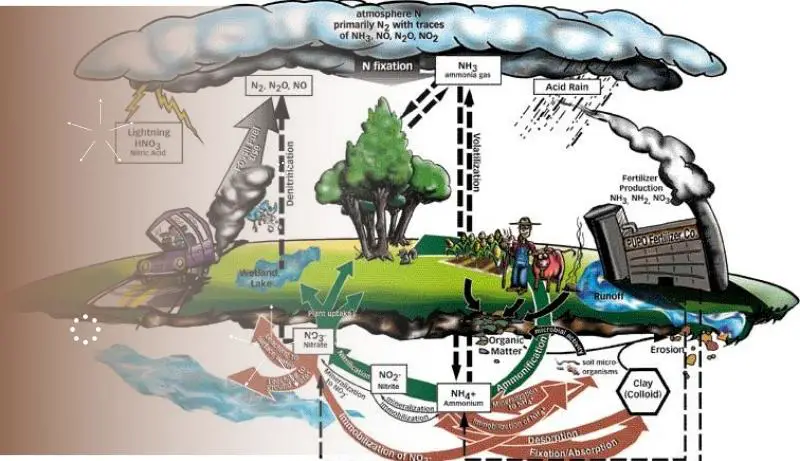You might think there’s nothing new to talk about when it comes to soil. But have you ever considered why your backyard soil differs from that of the local park? How does the shape of the soil alter as the season’s pass?
You’re probably thinking about it right now!
One of the most cardinal components of the earth’s surface is soil. The dirt, on the other hand, is not the same everywhere. Several factors influence this variation.
It may come as a surprise to you that climatic scenario has an effect on how soil forms. There’s a lot more to learn!
We’ll walk you through everything you need to know about soil formation in this post. We will focus on how soil uniquely changes through time.
See Also: Our selected Potting Soil for Avocado Tree lists for you.
Let’s go find them!
Soil – The Typology
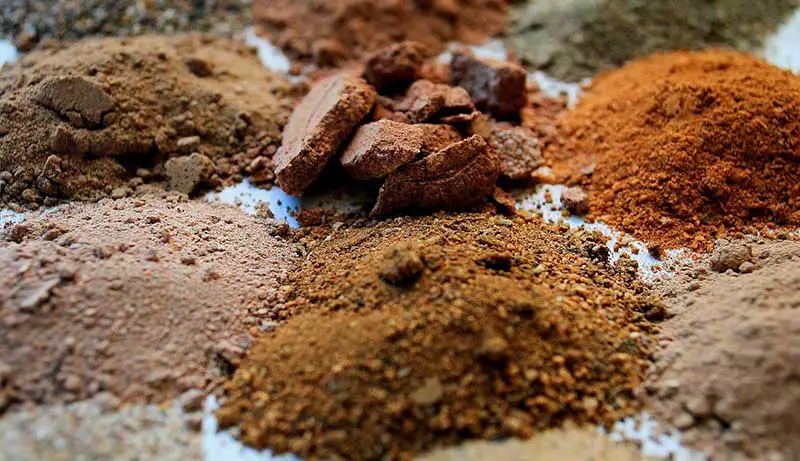
It is critical to focus on the types of soil if we want to understand the nature of the soil. Soil is generally divided into 13 categories. Let’s take a quick look at the many aspects of the soil.
1. Colluvial Soils/Talus
The presence of gravity is directly responsible for the development of colluvial soil. The variability in the amount of moisture in the air causes the ground to slide down the steeper sides of hills and mountains.
This results in a loosening of the soil. The valleys that lie at the foot of the mountains often have soil that is suitable for farming.
2. Alluvial
The deposition of rock next to the bed of the river results in the formation of alluvial soil.
Because river water carries the rock sediments with it, the land that it passes over is incredibly fruitful. There is a large quantity of alluvial soil in the Indian subcontinent.
3. Glacial Drift
The glaciers and icebergs that were once in this area have been replaced by this type of soil. Clay, sand, silt, boulders, and gravel are some of the components that make up glacial drift.
See More: Get a good quality Soil for Beans from our lists.
4. Marine
Marine soil is the type of soil that is found in areas that are close to the ocean, as the name suggests. The consistency of this soil is not as stable as the alluvial soil. Instead, it is a composite material made up of sand, silt, and clay.
5. Lacustrine
Lacustrine soil is the type of soil that forms when deposition takes place as a result of the settling of sources of still water. This soil is known to accumulate near the edge of the lake most of the time.
6. Caliche
CaCO3 concentration is high in caliche. The most frequent type of caliche soil is cement. This soil comprises sand, gravel, and clay in addition to CaCO3.
Also Read: Different types of Soil for Fruit Trees and their uses.
7. Eoline
The process of eoline soil production is fascinating. Sand settles across a large region as a result of the wind. The desert dunes are a common example of eoline soil deposition.
8. Loess
Loess is very similar to eoline in terms of pattern. This type of soil settling is caused by a windstorm. The main difference is that the gravel is fine and uniformly graded.
9. Bentonite
Bentonite is composed of very small grains of ash that were produced by volcanic eruptions. The plastic-like texture of this soil is what sets it apart from other types.
Because of its fluidity, bentonite is an excellent choice for use as a lubricant in the drilling process.
Related Post: Besides, you can choose some Potting Soil for Jade Plant.
10. Tuff
It is not an incorrect description to call tuff a more refined type of bentonite. Tuff is formed when volcanic ash is broken down into very small particles.
11. Marl
Marl is a type of fine-grained soil that originates in marine environments. The calcium carbonate content has been increased. This soil is formed in the water by the deposition of the body cells of animals that have died there.
12. Loam
Clay, sand, and silt are the three components that make up loam soil. Loam is the most common type of soil. There is a possibility that a sizeable amount of the organic component is present in this soil.
13. Cumulose /Muck
The organic quotient of cumulose soil is larger when compared to that of other types of soil. The muck is the result of the accumulation of soil particles underneath the vegetation in an environment with saturated water.
14. Gumbe
Gumbe is soil that has an extremely black color to it. This dirt has a viscous consistency, and it almost reminds one of plastic.
Properties of Soil
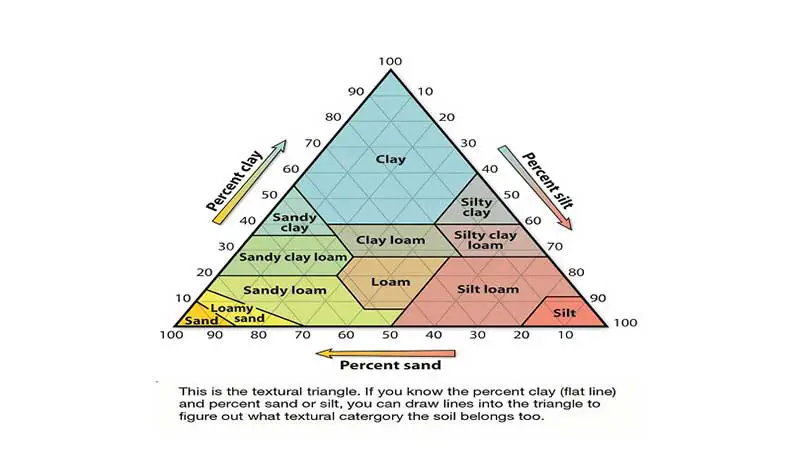
The composition of soil includes particles of varying sizes. In addition to that, all soils contain granules and particles of minerals, as well as organic matter, water, and air.
The interplay of all of these elements is what determines the characteristics of the soil. Because of this, the texture, structure, consistency, and chemistry of soil can vary greatly from one place to the next.
Understanding the Soil Composition
Soil is a thin layer of material that forms as a result of rock weathering. Simply put, the soil that covers the earth’s surface is made up of rock particles.
The majority of it is made up of mineral particles, organic components, air, water, and living creatures. All of these elements interact in a slow but constant manner.
What Are the Different Soil Composition Methods?
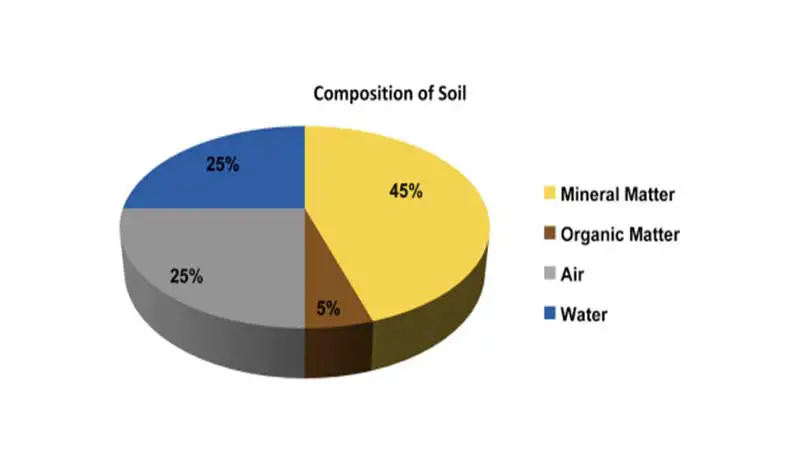
The process that leads to the development of soil is ongoing. It evolves with time. The gradual deterioration of rocks that occurs as a result of weathering is what leads to the formation of soil.
We are able to broadly divide the process of weathering into three distinct categories: chemical, physical, and biological.
- Chemical Weathering
Rocks break down due to changes in their chemical makeup. That can happen when minerals in rocks react with water, air, or other chemicals.
- Physical Weathering
Rocks break apart because of how environmental facts work. Rocks can be broken down by changes in temperature, abrasion (when rocks hit each other), and frost.
- Biological Weathering
Living creatures decompose rocks in this type of weathering. Plant roots can grow into fissures in the rock, causing it to split, while burrowing animals can let water and air enter.
How Does Climate Affect Soil Formation
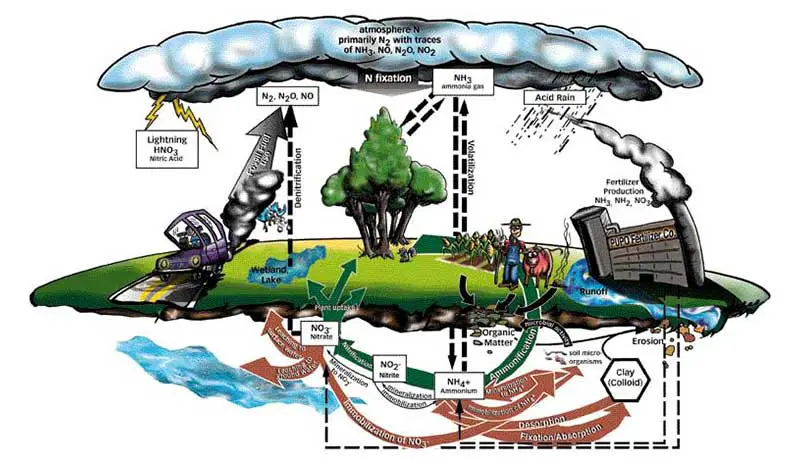
Climate is one of the most important aspects that have a role in the formation of soil. Rainfall and temperature are two aspects of climate that are particularly important to consider.
The organic components and organisms that carry water out of the soil are removed gradually with time by precipitation. This type of washing out could reduce the fertility of the soil.
On the other hand, the temperature does have an effect here, and it’s a good one. It exercises a direct impact on the process of organic matter breakdown in the soil. In addition to that, it has an impact on the weathering process. Because of this, the development of soil is sped up by the presence of moisture and heat.
Is There Anything Else That Influences Soil Formation?
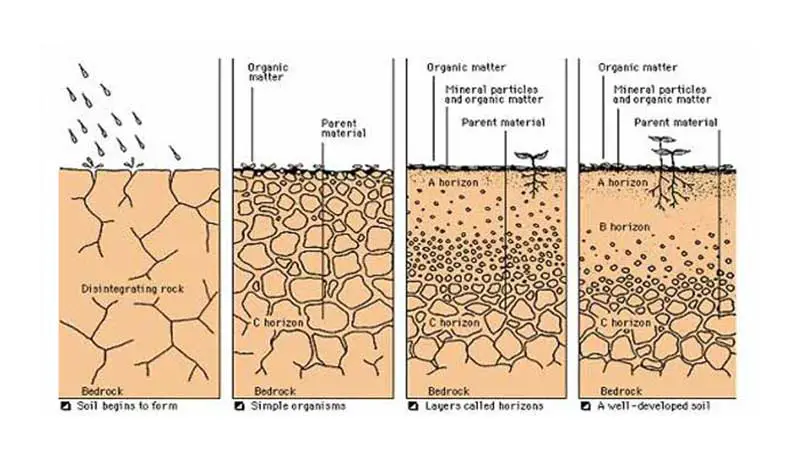
As previously said, soil formation is determined by a variety of factors. Aside from time, a number of other elements come into play.
When it comes to the development of soil, four major factors have a direct impact. Organisms, climate, geography or topography, and parent material are the four categories.
Let’s look at how each of these elements contributes to the formation of soil.
- Organisms
For this discussion, we will refer to plants, microbes, insects, and mammals collectively as organisms. It could come as a surprise to learn that people are also responsible for altering the soil in some ways.
Plants start to sprout around the time that the soil begins to take shape. These plants eventually pass away and are broken down by the earth. Once more, animals obtain their nutrition from the dirt. In addition, the nutrients from their waste and dead bodies are returned to the ground.
As a direct consequence of this, the ground becomes altered. Bacteria, fungi, and worms are the primary agents in the transformation of plant debris, animal waste, and animal leftovers into organic matter. This can refer to things like peat, humus, or even charcoal.
- Landscape or Topography
The grade of the ground, as well as its length and form, all have an impact on the drainage system. This slope determines the quantity of rainfall that occurs in that area, which in turn determines the vegetation that lives there. The formation of soil is influenced by all of these different factors.
The movement of soil particles across a vast region is caused by several factors, including gravity, wind, and water. Because of this, the soil on the hill is just a few inches deep.
In a similar fashion, the particles that are moved produce alluvial, colluvial, and aeolian soil.
- Parent material
Minerals make up the entirety of the soil’s underlying structure. These minerals are formed as a result of the eroding and weathering of rocks. There are quite a few factors at play that contribute to the decomposition of the parent material.
Despite this, some of the most important factors include wind, temperature, water, gravity, creatures, chemical interaction, and variations in pressure. The characteristics of the newly formed soil are going to be different depending on the material that came before it and how it was generated.m
- Time
There is no room for debate on the significance of time in the process of soil formation. Both the climate and the vegetation of an area influence the landscape and the parent material with time.
As soils age, minerals undergo metamorphosis, chemical compounds and clays migrate downward through the soil profile, and organic matter builds up. In addition, soils become increasingly rich in humus.
To highlight here, the aging that has occurred here is indicative of the formation of soil. The process of aging is also influenced by a variety of other elements, including climate and microbes.
Frequently Asked Questions
1. Could you tell me about some of the factors that influence soil quality?
– To put it another way, soil quality is a measurement that may be used to determine how well it nourishes plants.
That is, the rate of respiration, bulk density, and supply of water and nutrients are some of the factors that determine the quality of the soil.
2. What are the factors that influence the soil color?
The color of the soil is purely determined by the minerals present. Ferric oxides give the soil a yellowish or reddish hue. The dark brown hue of the soil, on the other hand, is due to the high presence of organic compounds.
3. What exactly do you mean when you say soil formation?
A thin layer of soil covers the earth’s surface. Rock weathering creates this layer.
The majority of it is made up of mineral particles, organic materials, air, water, and living creatures, all of which interact slowly but regularly.
4. Is there any effect of temperature on the way soil forms?
Yes.
Soil temperature can, directly and indirectly, affect plants. Temperature variations hinder moisture and nutrient absorption. The plant will perish.
5. Is soil formation influenced by the weather?
Yes.
One of the most important factors influencing soil formation is the climate. Rainfall and average temperature, among other factors, have a significant impact on soil formation.
6. What is the period it takes for the soil to form?
Soil does not form in an instant. The soil takes an average of 400 to 500 years to form entirely.
7. What exactly are soil master horizons?
Soil horizons are horizontal layers below the soil profile. A, B, C, E, O, and R are prime horizons. Six soil master horizons exist.
Final Words
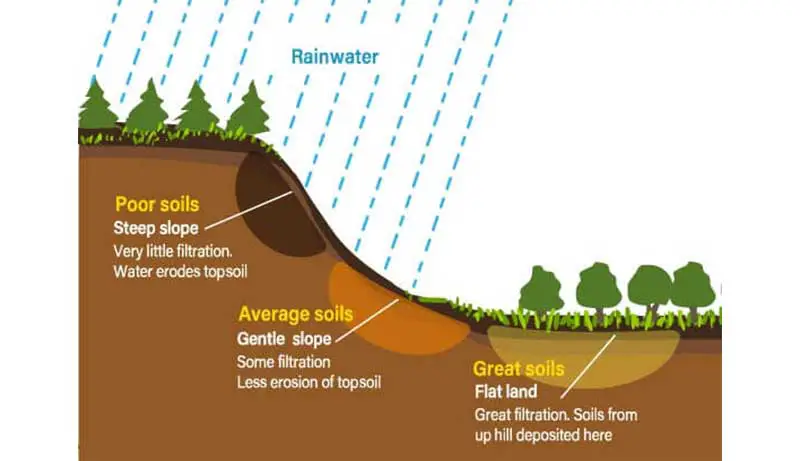
Differences in soil composition among areas may appear to be straightforward at first. The reality, however, is not the same. Soil formation is influenced by several factors, including time.
Our team of experts attempted to give you a basic understanding of soil formation. Nonetheless, there is much more to learn. Tell us what you’d want to learn next. We will be happy to assist you.

David, the founder of The Garden Fixer, started with a passion for gardening in 2012. He has continued his passion for gardening and desire to improve his skills and wanted to share his journey and helpful knowledge with other like-minded individuals.
He launched The Garden Fixer as an outlet for those interested in learning more about Gardening in hopes they can take what they learn and apply it for themselves!
